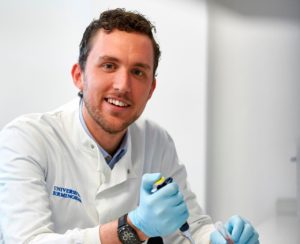Following her PhD, Artemis worked in the Department of Materials Science at Imperial College as a Marie Curie Research Fellow until 2003. Following this she accepted a position as Lecturer in Nanotechnology in NIBEC, University of Ulster. In 2005, she moved to the University of Birmingham and became a Birmingham Fellow. In 2021 she became a Reader in Biomaterials.
Artemis’ main research interests are in the microstructural characterisation of materials for biomedical applications as well as in multifunctional materials with emphasis in orthopaedic antimicrobial materials. She has published over 70 research papers in international scientific journals. Artemis has an active research group and has successfully supervised over 50 postgraduate students. She has recently coordinated a 3-year Marie Sklodowska-Curie RISE programme (NEXT-3D). The programme focused on the development of Materials, Processing and Characterisation to produce multifunctional coatings (devices) for maxillofacial and orthopaedic applications using 3D laser printing and sintering. Artemis is currently one of the partners of a Marie Curie ITN DOC-3D printing that aims to develop appropriate 3D processing methodologies for ceramics and Artemis’ work focuses on the 3D printing of multicomponent ceramic implants for orthopaedics as well as the modelling of 3D processes (including heat transfer in ceramics) and post-processes (especially for DLP 3D printing techniques). Artemis also completed successfully a Marie Curie IF project (NOVA) that aimed to the development of an antimicrobial ceramic composite powder with interesting biological properties based on lanthanide doped glasses and hydroxyapatite and is currently researching their potential to be used for direct 3D laser printing. Artemis is intensively researching antimicrobial peptides and the development of antimicrobial medical devices mainly for orthopaedic applications and very recently in the field of cancer research. She holds two patents one in an antimicrobial medical surface and a second in a cell-penetrating peptide for ophthalmology applications.



